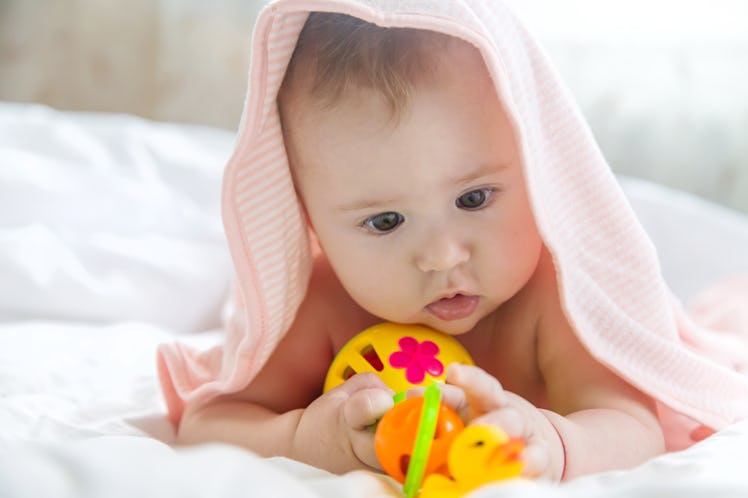What Will My Baby Look Like? Science Provides Some Clues.
Babies are full of surprises, but basic genetics can help parents guess what their newborn might look like.

There are so many things expectant parents wonder about during pregnancy. Will the baby be healthy? What will we name them? Do I really need to buy a $1,300 crib? And, perhaps the most fun to ponder: What will my baby look like? Genetics may seem like the world’s most ancient lottery, and it is full of surprises. But with the help of modern science, parents can make some educated guesses about what their baby will look like when it comes to specific traits, such as height and eye color. Although newborns may strongly resemble one parent or the other, they might also look like neither. This is probably not because of the milkman, but rather the result of complex polygenic traits being passed down.
“The whole purpose of the human species is survival, so it’s really important that we are unique and different with every new conception,” says Mandy Katz-Jaffe, Ph.D., scientific and genetics director at CCRM Fertility. “We’re really not able to predict how a baby will look, exactly, because we don’t know how that reshuffling will go.”
This so-called “reshuffling” is complicated, to say the least. You and your partner each have 46 chromosomes, of which 23 will get randomly sorted into your individual egg and sperm cells. When sperm and egg join, they each bring their unique mix of 23 chromosomes, creating a single cell with the necessary 46. This cell divides over and over again, eventually forming a fetus. Every time a couple conceives another kid, the same process occurs, but the chromosomes get shuffled in a different way, a process scientists refer to as recombination. And this makes all of your potential babies look different.
What Color Hair Will My Baby Have?
The amount of melanin in hair determines hair color, which is often controlled by the MC1R gene, of which most people have two copies. However, scientists have discovered an additional 20-plus genes that influence hair color. They’ve also found that in some cases the MC1R gene can become deactivated, which can result in strawberry blond, auburn, or red hair. When both copies are turned off, this produces very red hair in a baby.
Although darker shades of hair are associated with dominant alleles, and fairer or redder shades with recessive ones, that doesn’t mean a brunette parent will have a brunette child. If both parents have brown hair, there is a strong possibility their baby will too, but there are many genes at play. And if both parents carry a recessive gene for different hair colors, and if those match up in the recombination process, then it’s anyone’s guess.
What Color Eyes Will My Baby Have?
Geneticists used to suspect that physical traits like eye color were single-gene traits, meaning that if one parent had brown eyes and the other had blue, their kids would have brown eyes because the gene for brown eyes is dominant, whereas the gene for blue eyes is recessive. It’s more complicated than that. For starters, there are at least eight genes involved in the determination of one’s eye color. The OCA2 gene controls almost three-quarters of the blue-brown color spectrum, but there’s evidence that other genes can override it in rare instances. But if both parents and both sets of grandparents have blue eyes, then there’s a good chance their offspring will too.
What Will My Baby Look Like?
Freckles, dimples, earlobes, hairlines, male pattern baldness, and curly hair are somewhat predictable traits — but they come with the same caveats as hair and eye color, in addition to new ones. Freckles, for instance, are thought to be controlled mostly by the MC1R gene. However, the environment has an impact on the number and size of freckles. Baldness is believed to be passed on by second- or third-degree relatives — that is, relatives who share 25 and 12.5 percent of genes, respectively — but not always. And curly hair is a result of many genes at play, but those vary depending on what part of the world people live in.
Trying to predict what a baby will look like using genetics isn’t exactly a fool’s errand. It’s just that kids are full of surprises, even when they’re still developing in the womb. Katz-Jaffe understands why parents wonder what their baby will look like, but it’s important to not put too much stock in those guesses or to worry about outcomes. As children continue to grow and develop, they continue to reveal their genetic inheritance while becoming evermore themselves.
This article was originally published on